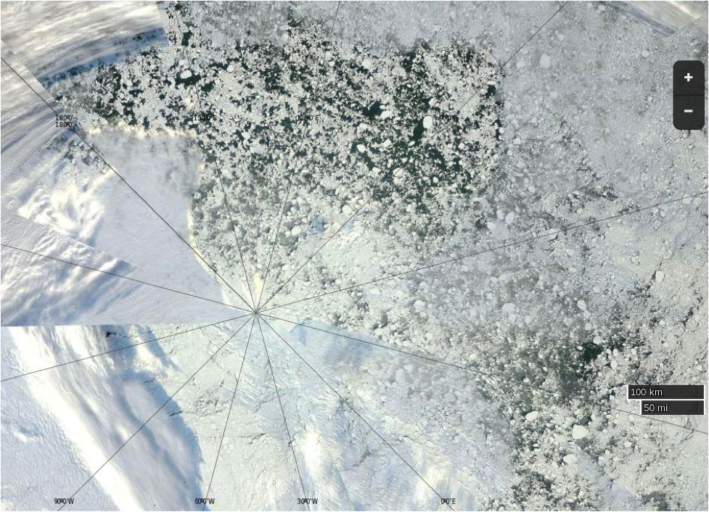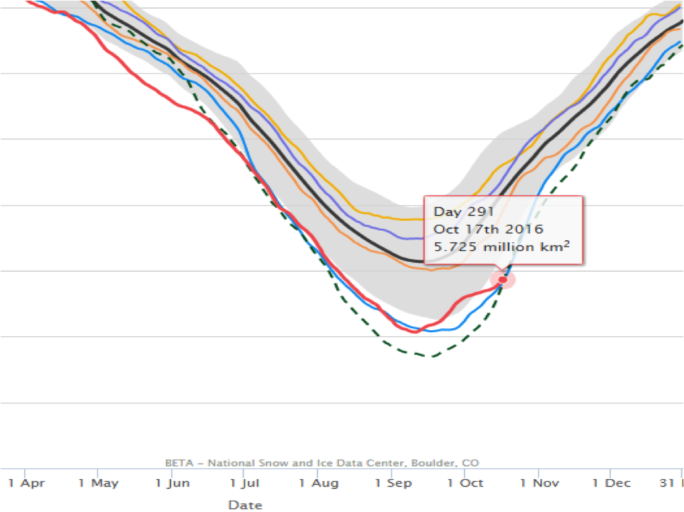Arctic Sea Ice @ Record October Lows; "Unprecedented" Dispersal Patterns During Melt
As temperatures in higher latitudes consistently ranging from three to five degrees Celsius above normal fall averages combine with warmer ocean temperatures, Arctic sea ice has begun displaying irregular, unexpected patterns of melting and freezing. The annual minimum Arctic ice melt appears to have been reached in early September 2016. This is a measure of the lowest amount of remaining sea ice during the year. Arctic ice cover, which serves the crucial role of reflecting large amounts of incoming solar radiation, has declined more quickly than most scientific models forecast.
EDIT
Several prominent ice researchers have voiced concern over the extreme melt during a summer season characterized by very cloudy conditions in peak melting months. They reiterate that this behavior indicates a continued shift into unprecedented conditions in the Arctic.
This year’s Arctic melt featured additional irregular phenomena as the loss of ice converged with warming ocean temperatures to feed back into regional and global weather patterns. Sea ice began an unusual pattern of dispersal in regions above North America. Frozen areas that typically prevent the movement of ice from the Central Arctic Basin (CAB) have begun to fracture and allow further release of floating ice. Additionally, very old perennial ice now comprises only three percent of the total pack, whereas scientists estimate that old ice made up about 20 percent of the total as recently as 1985.

NASA Worldview image of the North Pole and surrounding area taken on September 8th, 2016.
EDIT
The loss of sea ice, however, contributes to a variety of positive feedback loops that increase overall warming of the region and entire planet. Pronounced melting of sea ice in the Baffin Bay, for instance, appears to intensify warmer summer winds that push further melting of Greenland’s ice sheet. This runoff of massive land ice into the Atlantic Ocean has become a contributor to overall ocean level rise and may be already altering the Atlantic Meridional Ocean Cycle (AMOC). Recent analyses indicate that melt water from Greenland has added some 13,000 cubic kilometers (about 3,120 cubic miles) of water into the ocean since the onset of the 20th century.

October 17 of 2016 marked the return of record low sea ice after a period of virtually paused refreezing. The former record low extent was in 2012, marked with the green dashed line. 2016 is featured in red. The black line represents average ice extents from 1981 to 2010, with 2 standard deviations from trend in grey. Image source: NSIDC.
EDIT
https://news.mongabay.com/2016/10/irregular-arctic-climate-reduces-sea-ice-to-another-record-low/

